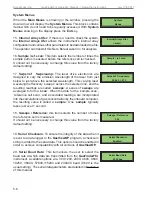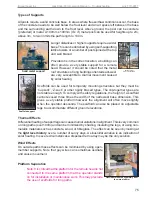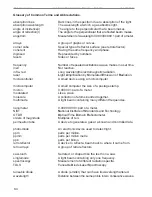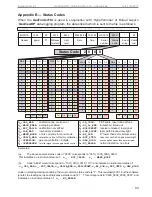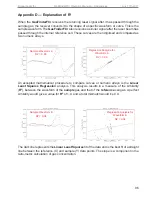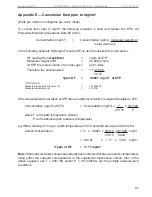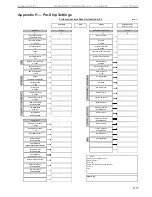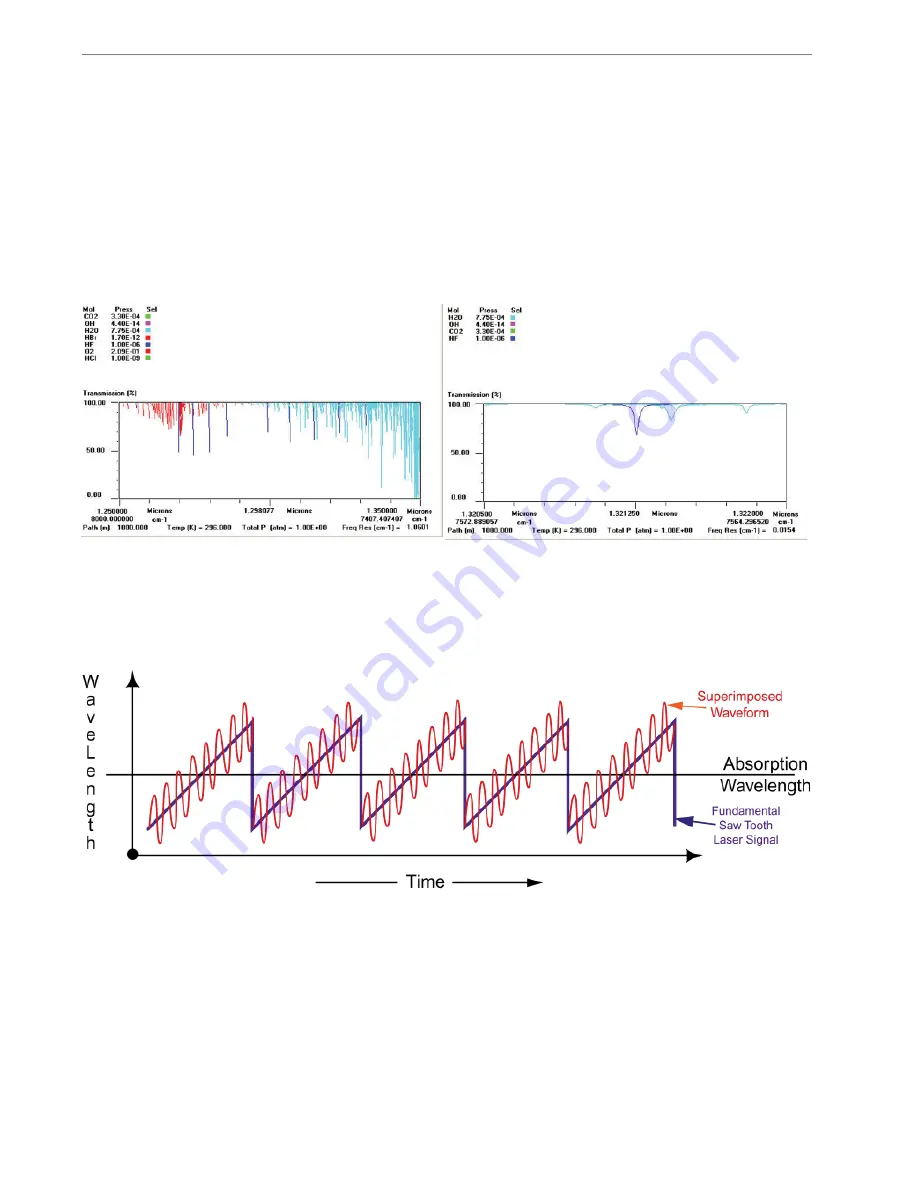
8.2
Boreal Laser Inc.
GasFinderFCr Operation Manual — Tutorial July 17th 2017
Gas Detection with a Laser
Every gas is composed of atoms or molecules. If the target gas is hydrogen fl uoride, then one
atom of hydrogen would have combined with one atom of fl uoride to give one molecule of
hydrogen fl uoride. These molecules have various frequencies or wavelengths at which they
resonate or vibrate. See fi gure 1. These are known as the absorption wavelengths, because
when the molecules absorb a portion of the light energy, they vibrate at these wavelengths.
Because molecules of other gases have different atomic weights, these gases absorb light
at different wavelengths from the target gas. Wavelengths for laser gas detection are chosen
in regions where the absorption of the target gas is not interfered with by the absorption
wavelength of any other gases that may be present.
A laser beam can be chosen which operates at a specifi c absorption wavelength for this target
gas. See fi gure 2. The laser operating wavelength is kept stable by housing it in a temperature-
controlled box. A fl uctuating (saw-tooth) current is used to drive the laser, and this causes the
wavelength to change slightly so that the laser scans across the absorption wavelength.
The laser beam has a signal superimposed on it at a different frequency. See fi gure 3. When the
gas molecule is struck by the laser beam, the molecule is induced to vibrate. These vibrations
affect the laser beam by changing this superimposed frequency. This difference is detected
by a receiver in the instrument, when the laser beam is refl ected back.
The difference in the superimposed signal, together with the intensity of the returning beam,
is used by a computer to obtain a measurement of the target gas concentration. The laser
operates in the near infra- red spectrum (1300 to 1700 nanometers) and cannot be seen with
the eye. It has a line width of about 0.3nm and is concentrated and very intense. For the same
power output, it is able to penetrate dust and steam better than a visible laser.
Fig. 3
Fig. 2
Fig. 1
Summary of Contents for GasFinder FC
Page 50: ...7 8 Boreal Laser Inc GasFinderFCr Operation Manual Troubleshooting July 17th 2017...
Page 56: ...9 2 Boreal Laser Inc GasFinderFCr Operation Manual Appendices July 17th 2017...
Page 71: ......
Page 73: ...BOREAL LASER INC MC Instrument Overall Dimensions JB0125MC A 1 of 1 NTS A Dim mm...
Page 75: ......
Page 77: ......
Page 79: ......
Page 81: ......
Page 83: ......
Page 85: ......
Page 87: ......

